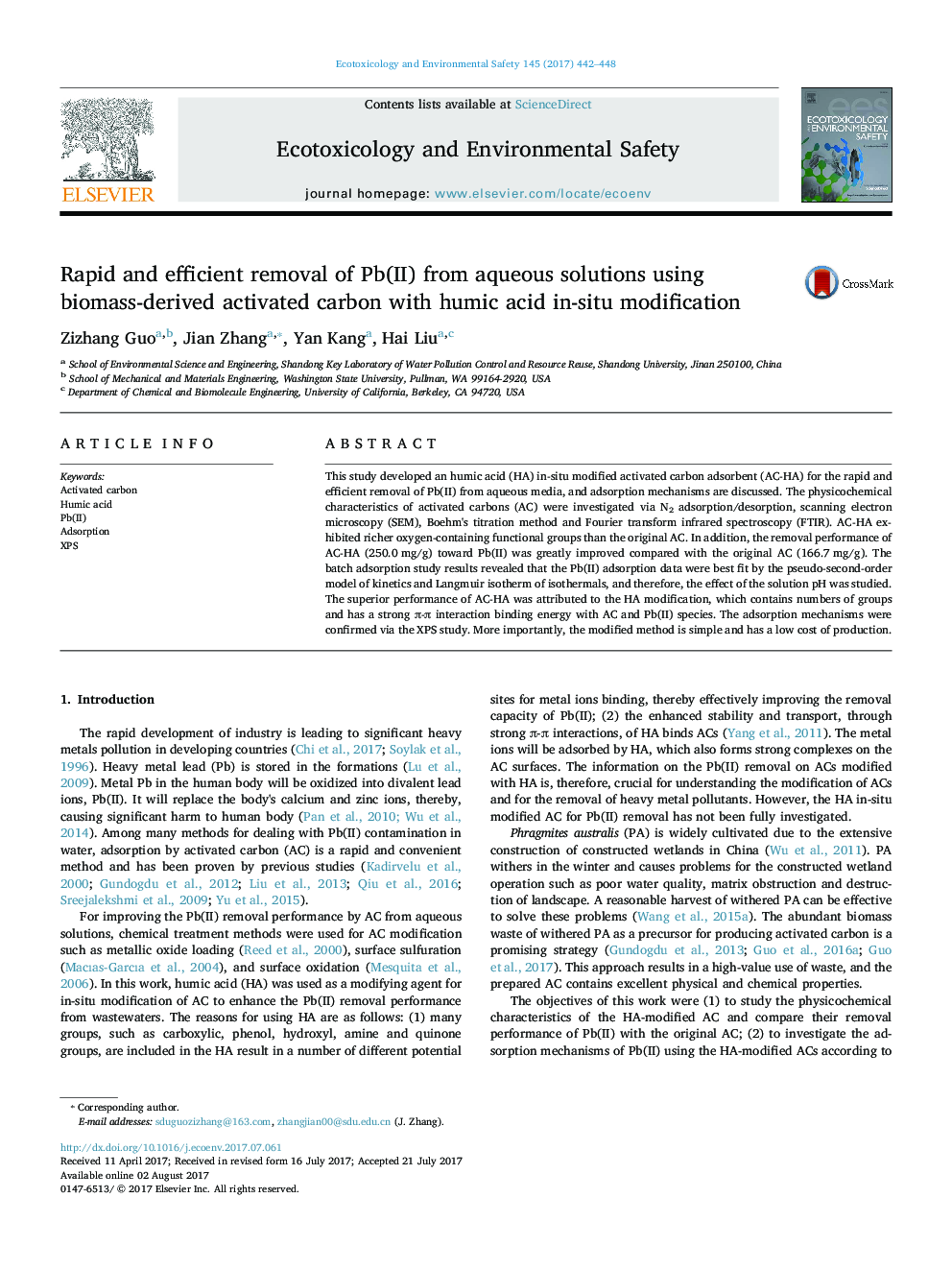| Article ID | Journal | Published Year | Pages | File Type |
|---|---|---|---|---|
| 5747755 | Ecotoxicology and Environmental Safety | 2017 | 7 Pages |
â¢Humic acid (HA) was used as a modifying agent for activated carbon preparation.â¢Oxygen-containing functional groups on the surfaces of the prepared activated carbon was enhanced.â¢The prepared activated carbon was exhibited rapid and efficient performance of Pb(II) removal from aqueous solutions.â¢The adsorption mechanisms of Pb(II) were investigated by XPS study.
This study developed an humic acid (HA) in-situ modified activated carbon adsorbent (AC-HA) for the rapid and efficient removal of Pb(II) from aqueous media, and adsorption mechanisms are discussed. The physicochemical characteristics of activated carbons (AC) were investigated via N2 adsorption/desorption, scanning electron microscopy (SEM), Boehm's titration method and Fourier transform infrared spectroscopy (FTIR). AC-HA exhibited richer oxygen-containing functional groups than the original AC. In addition, the removal performance of AC-HA (250.0Â mg/g) toward Pb(II) was greatly improved compared with the original AC (166.7Â mg/g). The batch adsorption study results revealed that the Pb(II) adsorption data were best fit by the pseudo-second-order model of kinetics and Langmuir isotherm of isothermals, and therefore, the effect of the solution pH was studied. The superior performance of AC-HA was attributed to the HA modification, which contains numbers of groups and has a strong Ï-Ï interaction binding energy with AC and Pb(II) species. The adsorption mechanisms were confirmed via the XPS study. More importantly, the modified method is simple and has a low cost of production.
Graphic abstractDownload high-res image (383KB)Download full-size image
